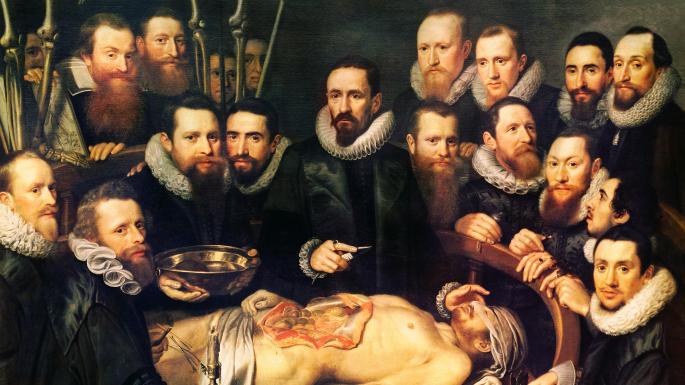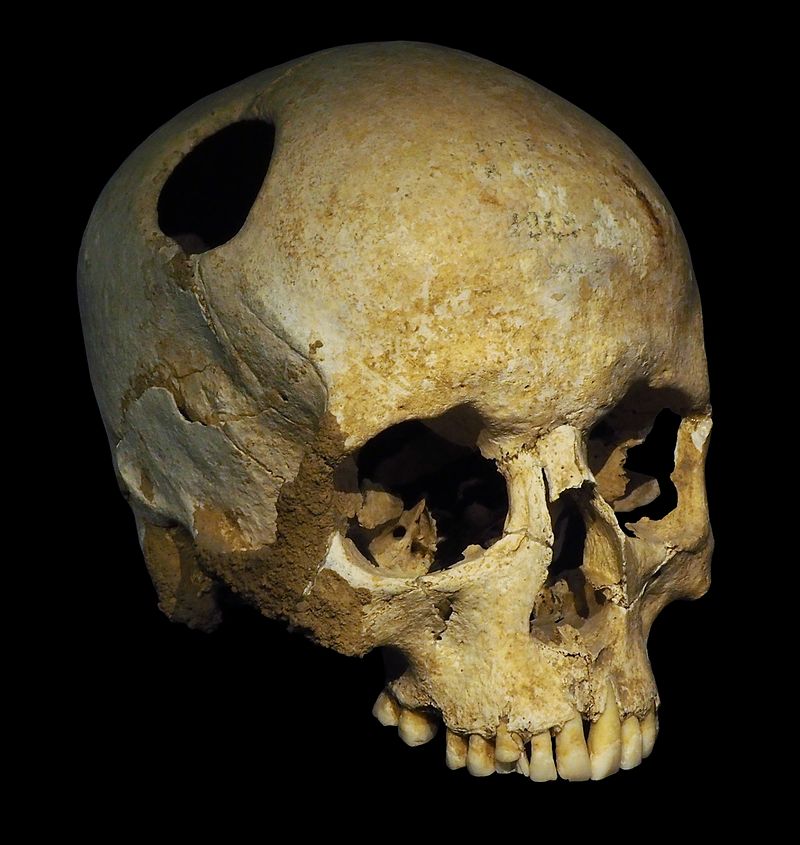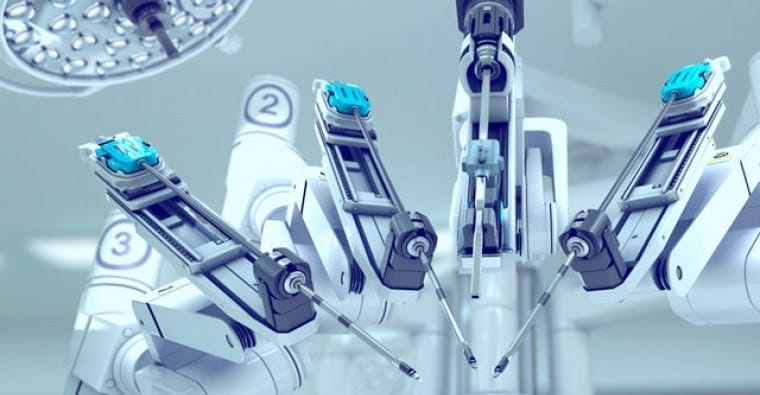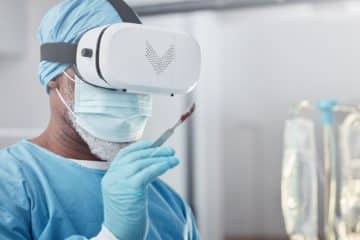History of Surgery – Overview
Surgery is the branch of medicine that deals with the physical manipulation of a bodily structure to diagnose, prevent, or cure a disease. The patient’s tissues are cut during this technique to permit the manipulation of otherwise inaccessible tissues.

History of surgery
The history of surgery can be traced back to the Neolithic age when humans first learned to make handle tools.
The practice of surgery has always been evolving and surgical techniques develop and become more sophisticated over time. However, there were principal obstacles associated with early surgery namely – bleeding, pain, and infections.
There was always a great risk of the patient bleeding out during a surgical procedure. Also, the patient had to endure excruciating pain as there were few advances in the field of aesthetic surgery.
Modern pain control through anesthesia was discovered in the mid-19th century which makes modern surgery less painful.
Another obstacle with early surgery was the risk of infection as there were few advances in the use of antiseptic to sterilize surgical instruments and site of operations.
The works of Joseph Lister in the nineteenth century paved way for a safer and healthier way to perform surgery while posing a limited risk of infection for the patient.
Surgery has come a long way and we will look into how it has developed over time.
Ancient Surgery

trepanation
The history of surgery reaches back to the Neolithic and pre-Classical ages. The first evidence of a surgical procedure is that of trephining or cutting a small hole in the head.
Trepanation is a surgical intervention in which a hole is drilled or scraped into the human skull, exposing the dura mater to treat health problems related to intracranial diseases or release pressured blood buildup from an injury.
Trepanation is perhaps the oldest surgical procedure for which there is archaeological evidence, and in some areas may have been quite widespread.
Some studies have shown a survival rate of up to 50% for the surgical procedure as some skulls were found healed. Ancient Greeks also performed some surgical procedures including setting broken bones, bloodletting, draining lungs of patients with pneumonia, and amputations.
Middle Ages
Surgeons of the middle ages through the 18th century were often barber surgeons who would travel and perform minor procedures including tooth extraction, bloodletting, and treating war wounds.
Rather than studying at universities like physicians, surgeons learned through apprenticeship and observation, as a blacksmith would. Guy de Chauliac was one of the most eminent surgeons of the Middle Ages. His Chirurgia Magna or Great Surgery (1363) was a standard text for surgeons until well into the seventeenth century.
Renaissance
There were some important advances to the art of surgery during this period. Andreas Vesalius professor of anatomy at the University of Padua was a pivotal figure in the Renaissance transition from classical medicine and anatomy based on the works of Galen, to an empirical approach of ‘hands-on’ dissection. In 1543, he wrote the ground-breaking De Humani Corporis Fabrica Libri Septem( The Fabric of the Human Body), which became the most comprehensive anatomy text at the time and the basis for 200 years of anatomical study.
Another important early figure during this period was Wilhelm Fabry often referred to as “the Father of German Surgery”, who was the first to recommend amputation above the gangrenous area and to describe a windlass tourniquet.
Modern Surgery
In modern times, surgery has achieved astronomical growth and development leading to the development of scientific surgery, anesthetic surgery, antiseptic surgery, x-rays and most recently robotic surgery.
– Scientific surgery
During the Age of Enlightenment in Europe (1715 – 1789), the field of surgery was put on a sound, scientific footing. John Hunter, generally regarded as the father of modern scientific surgery was pivotal to this development.
He brought an empirical and experimental approach to science and was renowned around Europe for the quality of his research and his written works. Some of his notable works include the advancement of knowledge of venereal disease, new surgical techniques to repair damage to the Achilles tendon and appreciation of pathology.
– Anesthesia
Modern pain control through anesthesia was discovered in the mid-19th century. Before the advent of anesthesia, surgery was a traumatically painful procedure and surgeons were encouraged to be as swift as possible to minimize patient suffering.
This also meant that operations were largely restricted to amputations and external growth removals. Beginning in the 1840S, surgery began to change dramatically with the discovery of anesthetic agents that makes surgery painless for the patient.
Ether was first used as anesthesia by Crawford Long, and then chloroform was used. In 1884 cocaine was used as a local anesthetic. From 1905 Novocain was used.
– Antiseptic surgery
The risk of infection after surgery was dramatically reduced following the introduction of antiseptics. In 1865, Joseph Lister, who believed microorganisms could cause disease, developed his method of “listerism.”
Lister recommended antisepsis, or the removal of bacteria from surgical instruments, wounds, and the air above the patient. His process consisted of using carbolic acid as a sterilizing agent, but it was cumbersome and many surgeons who did not accept germ theory refused it.
By the 20th Century, asepsis, or the prevention of bacteria from entering a wound or sterile environment, gained prominence. Through methods such as boiling, using autoclaves, and chemical antiseptics, sterile operating environments could be achieved.
Physicians began wearing white coats, and clean linens dressed beds and operating tables. This final shift allowed for advancements in internal surgery and success in the surgical procedures we see today.
– X-rays
The use of X-rays as an important medical diagnostic tool began with their discovery in 1895 by German physicist Wilhelm Röntgen. He noticed that these rays could penetrate the skin, allowing the skeletal structure to be captured on a specially treated photographic plate.
– Modern Technologies

In the past century, several technologies have had a significant impact on surgical practice. These include Electrosurgery in the early 20th century, practical Endoscopy beginning in the 1960s, and Laser surgery, Computer-assisted surgery and Robotic surgery, developed in the 1980s.
Timeline of surgery and surgical procedures
6,500 BC – Skulls are trepanned
c 1,500 BC – The Ancient Egyptians have some knowledge of anatomy from mummification. Egyptian surgeons use clamps, saws, forceps, scalpels and scissors. The Egyptians used honey as an antiseptic.
c 335-280 BC – A Greek named Herophilus lives. He carried out dissections of human bodies in public. He is sometimes called the Father of Anatomy.
c 300 BC – Ancient Greek surgeons bathe wounds with wine to prevent them from becoming infected.
c 130-210 AD – The Roman surgeon Galen lives. Many of his ideas are wrong but they dominate surgery for centuries.
476 AD – The Roman Empire in the West falls. Afterward many skills are lost in Western Europe but are kept alive in the Byzantine Empire and are later practiced by the Arabs.
13th Century – In Europe surgery revives. In towns, skilled craftsmen called barber-surgeons practice. They carry out amputations and set broken bones. However, barber surgeons are lower in status than university-educated doctors.
Mid-14th Century – The Church allows some dissections of human bodies at medical schools but the ideas of Galen continue to dominate
1536 – Ambroise Pare treats wounds with a mixture of egg yolk, rose oil and turpentine rather than hot oil
1543 – Andreas Vesalius publishes The Fabric of the Human Body, which contains accurate diagrams of the human body. Vesalius bases his ideas on observation not the authority of people like Galen.
1735 – Claudius Amyand performed the first successful appendectomy.
1773 – Bernard Peyrilhe treated breast cancer by radical mastectomy which included both the pectoral muscle and axillary lymph nodes.
1842 – Crawford Williamson Long pioneered ether for anesthesia.
1844 – Horace Wells pioneered nitrous oxide for anesthesia.
1848 – James Young Simpson pioneered chloroform for anesthesia.
1854 – John Snow disproved the miasma theory of contagion.
1865 – Joseph Lister discovers antiseptic surgery
1879 – After becoming the first to diagnose the location based on neurological findings alone, Scottish surgeon William Macewen (1848–1924) performed the first successful non-primary (trephined) brain tumor removal, pioneering brain surgery.
1880 – German surgeon Ludwig Rehn performed the first thyroidectomy.
1884 – Austrian ophthalmologist Karl Koller first used cocaine as a local anesthetic for eye surgery.
1890 – German surgeon Themistocles Glück pioneered arthroplasty with a knee replacement and hip replacement using ivory.
1895 – Wilhelm Roentgen discovered X-rays.
1896 – The first successful cardiac surgery without any complications was performed by German surgeon Ludwig Rehn.
1905 – Novocaine was first used as a local anesthetic.
1914 – Blood transfusion was pioneered.
1916 – Austrian surgeon Hermann Schloffer performed the first splenectomy operation.
1940 – The first successful metallic hip replacement surgery.
1948 – The first successful open-heart surgery operation since 1925.
1952 – The first successful open-heart surgery using hypothermia.
1953 – The first carotid endarterectomy.
1954 – The first kidney transplant.
2005 – The first face transplant surgery is performed
2008 – A laser is used in keyhole surgery to treat brain cancer
2011 – The first leg transplant is carried out
2012 – The first womb transplant is carried out
The history of surgery is a long walk to freedom and it is important to note that the field is always advancing with the development of new tools, techniques and methodologies every day.
Related: Types of Surgery


